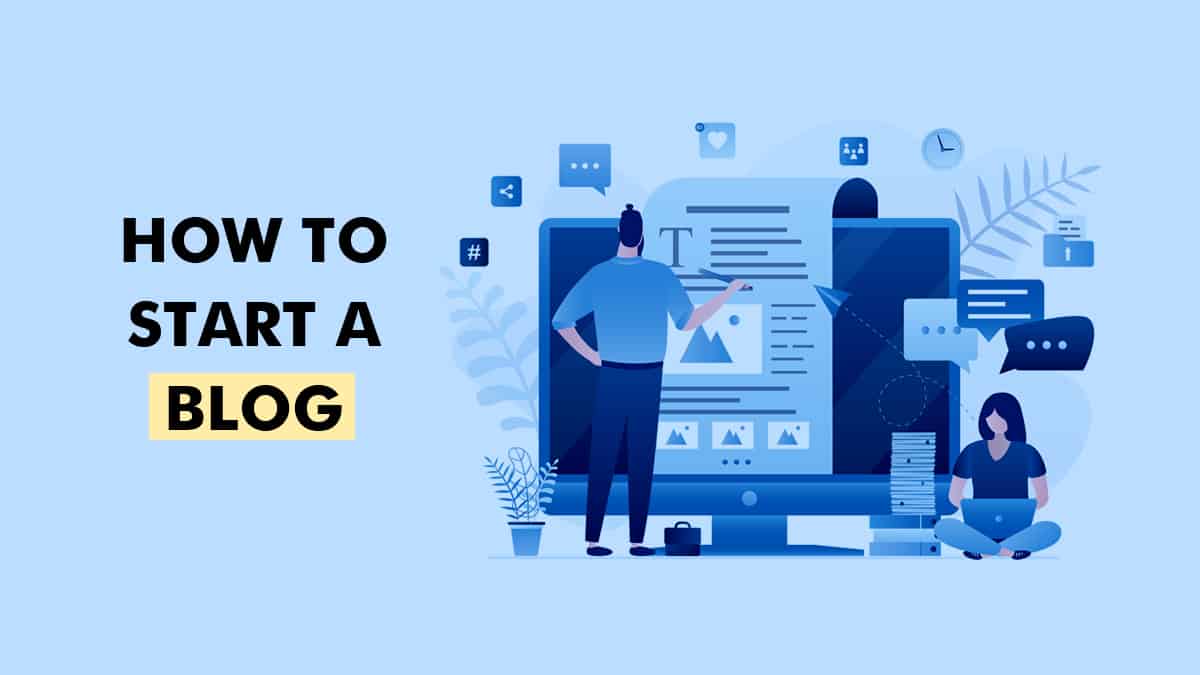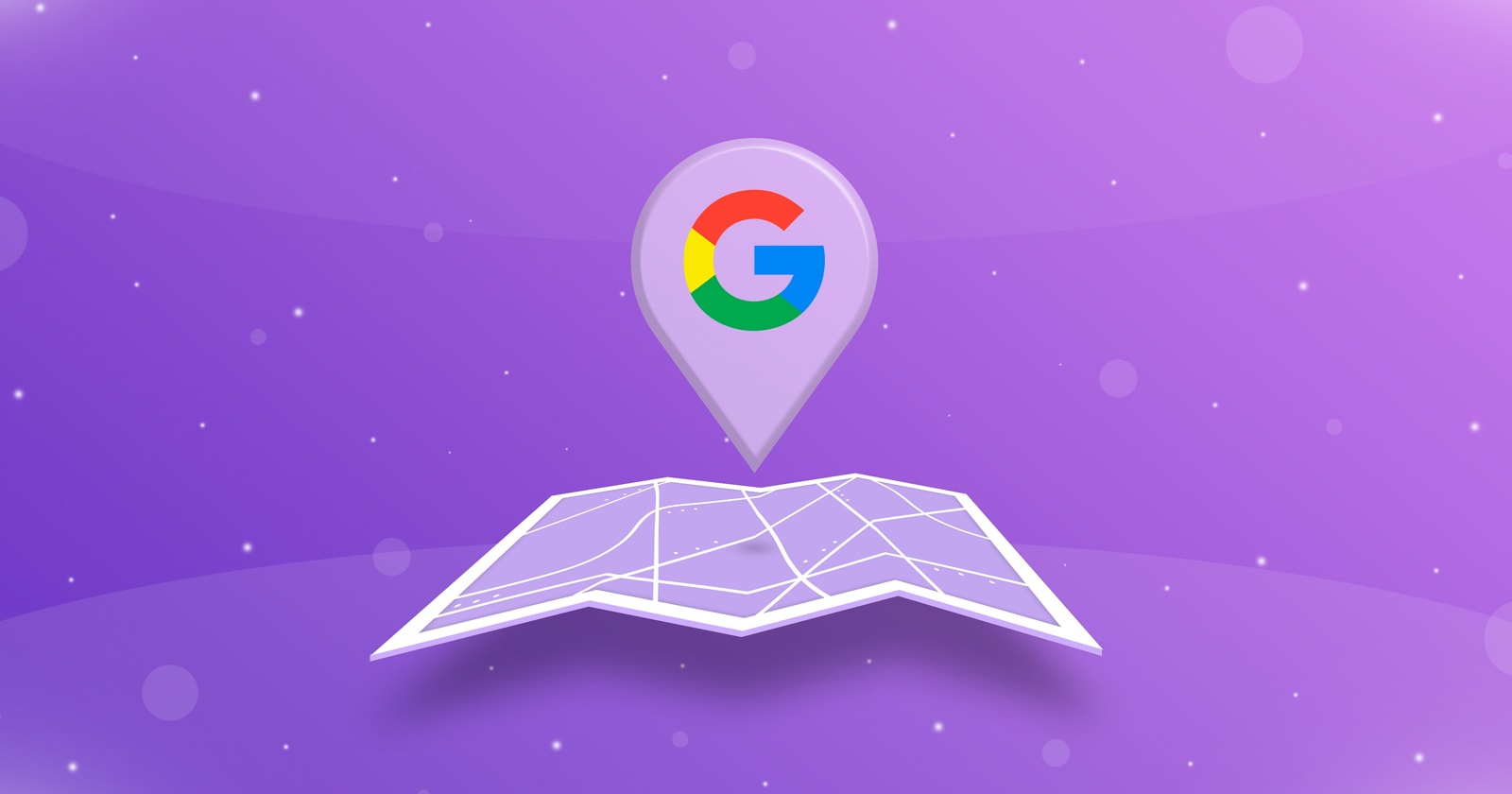Blogging is a way for businesses of all kinds to build a long-term following. However, the opposite trend is also taking place: a growing number of bloggers are establishing businesses as an extension of their blogs. It also makes sense. Building a customer base for a new business is one of the most difficult tasks. On the other hand, new bloggers frequently work backwards: creating high-quality content on a regular basis and then looking into ways to monetize that traffic is the first step in building an audience. If you’re just looking for a side business, starting a blog is simple. However, if you want to find innovative ways to earn money as a blogger, you will need to plan carefully how to start a blog for success. Steps to start a blog and to grow it into a source of income is covered in detail in this guide.
Why Should You Start a Blog?
One of the most prevalent misconceptions regarding starting a blog is that excellent writing skills are necessary for success. However, this is not true. Because people read blogs to gain a personal perspective on things, the majority of bloggers write in a very casual and conversational manner. Because of the format, numerous successful bloggers will also write about a variety of topics on the same blog. You do not have to be an expert in any of the topics you write about to succeed with a blog. For instance, visitors to a cooking blog don’t want to read a textbook written by a food scientist; Instead, they want to hear from a real-life cook who has made all of the mistakes. There are various digital marketing agencies that help clients set up their blogs, they can be hired too.
Before a blogger can achieve success, there is only one requirement: passion for your topic. At its core, blogging is about sharing one’s knowledge with the world. When you write about subjects you are passionate about, starting a successful blog is much simpler. As long as you write about topics in which you truly have an interest, your passion will keep your readers interested. So, why should you think about blogging? There are a number of reasons for it.
Tell Your Tale
A blog can help you speak up and be heard. You can choose to share your story with the world. One of the main uses for blogs is as a diary in which the writer writes about their daily activities for others to see.
Earn From Home
If done properly, blogging can be a very lucrative business. The top bloggers in the world obviously make a lot of money, however even part-time bloggers may make a lot of money if they follow the appropriate steps. The nicest aspect about blogging is that it’s a form of side income because you can create content for a blog for a few hours a week and continue to make money when you’re done.
Get Recognised
No, the paparazzi probably won’t be following you around in your most recent post. Having a successful blog, on the other hand, can help you realise your idea and gain a lot of recognition in your field. Many bloggers are regarded as experts because of their blogs, and some have even landed book and movie deals.
Form a Community
Blogging is all about interaction. A post you write gets comments from people. This approach makes it simple to connect with people whose interests are similar to yours. Through blogging, you can teach these people from your own experience as well as from what your readers teach you.
Steps to Start a Blog in 2024
Find Your Niche
A topic that you can blog about is called a niche. For instance, whereas “email marketing” and “social media” focus on a specific topic, “marketing” is a broad niche.
The first step to blogging success is choosing the right niche. Avoid broad ideas like “make money online,” “fitness,” “credit cards,” and so on when choosing a niche. Why? because the same subject is covered by millions of websites. It’s hard to succeed even if you create original content because there is a lot of competition.
Instead, focus on specific subtopics like “make money with freelance work,” “fitness for women over 50,” “credit cards for doctors,” and so on. There are several ways to find a niche for your blog, including the following: test your niche, know your skills and expertise, brainstorm ideas, do competitor and keyword research and discover long-tail keyword ideas related to the niche.
Choose a Domain Name for Your Blog
A good blog name should be self explanatory in order for potential visitors to understand what your site is about right away. If your blog concentrates on a certain subject, you should absolutely take that subject into account when choosing a domain name. But avoid getting caught up in a single word. For example, the term “cooking” is not required in a blog on cooking. Using words like “food,” “recipes,” and “meals” on your blog might also help readers understand that it is a cooking-related site.
If you want to start a blog where you talk about a variety of topics, I suggest using your name or a version of it because it’s all about you. You can also use your middle name or middle initial if your name has already been taken. Once you have some name suggestions, you must choose a domain extension. While.com is the most often used domain extension,.net and.org are also functional. Additionally, keep in mind that words cannot be separated by spaces in a blog site. A domain name can only contain dashes and no spaces or punctuation. You can follow the below tips if the name you wanted is already taken:
- Try a new domain name extension. You might still be able to acquire the .net or .org version of the name even if the.com version is already registered
- Include a few words. words like “a,” “my,” “best,” and “the”
- Put a dash between each word
Make Use of Domain Generator Tools
Using domain generator tools is one of the simplest ways to come up with great domain names. These free tools will generate suggestions for domain names after you enter any topic or keyword. Some of the free tools which you can use are Domains Bot, Panabee Name Station, Bust A Name, and Lean Domain Search. These are all domain name generators that, upon entering a keyword or topic, provide a variety of domain name concepts.
Make Use of ChatGPT
ChatGPT uses artificial intelligence to produce conversations that are human-like. Using ChatGPT, you can quickly generate dozens of domain name concepts for your blog or company. What’s better? You can use it to generate a lot of suggestions for domain names, and it’s completely free to use.
If your domain name is too long, people will have a harder time remembering it. A domain name with 5 to 15 characters is highly recommended. Most importantly, a short domain name is simple to type, spell, and pronounce.
Get a Web Hosting
It is best to consider web hosting to be a service for storage and management. Digital data doesn’t just reside on your computer when you start a blog or website. A web hosting service stores it, safeguarding your data and ensuring the continued operation of your blog or website. Websites as we know it today would not exist without web hosting. It is the responsibility of your website host to ensure that your blog is operating normally and at a speed that can handle traffic.
When you sign up for a hosting plan, you are, in essence, purchasing blog space on one of the data centre servers, which is where your digital data will be kept and managed. The only way to guarantee that your blog will remain safe online is through web hosting. The digital information of your blog is encrypted, monitored, and cared for by a support team with extensive training when it is managed by a web host.
Hosting Types
Shared Hosting
The term “shared hosting” refers to a type of web hosting in which multiple distinct websites are hosted on the same server. Because you share the same server, you split the costs, making it the most cost-effective type of hosting. Shared hosting is an excellent choice if you want to start a blog or a new business. Sharing a server in the past could cause issues in which a spike in traffic or resource use from one website would slow down its “neighbouring” websites. But, today’s web hosting subscriptions include a generous amount of resources that guarantee high performance.
VPS Hosting
The term “VPS” refers to a virtual private server. VPS hosts share a physical server with other websites, just like shared hosting. On the other hand, each VPS tenant has its own partition that is guaranteed to have its own dedicated resources. With correspondingly higher prices, there is frequently more memory, storage, and processing power available. VPS hosting is best for users with extensive server management experience. However, the levels of support, subscription details, and prices of these services can vary significantly, so do your homework thoroughly before signing up.
Dedicated Hosting
Dedicated hosting entails having your own dedicated server. It gives you access just like a virtual private server (VPS), but you don’t have to share the server with other websites or apps. You are, in essence, leasing a physical web server that is located at the facility of your service provider. You also have access to expert advice and professional support whenever you need it. Only extremely demanding enterprise-grade websites are eligible for this top-tier web hosting service. Renting a dedicated web server for a small or medium-sized business that costs thousands of dollars per month is not required.
Cloud Hosting
At first, the term “cloud hosting” was used to describe a scalable VPS setup with multiple servers, on the off chance that your web application had an unexpected traffic spike, the framework would have the option to arrange more assets and keep things going along as expected. As a result, cloud hosting’s pricing model and specifications would be more flexible. Cloud computing services typically include cloud hosting in addition to a variety of other advanced tools for cloud-based operations. Although it is possible, a typical website can be difficult to host using one of these “hyperscalers,” which operates millions of servers.
Customise Your Blog
Once you log in, you will be in the WordPress dashboard. Here, you can change everything about your blog. Everyone has a unique idea of how they want their blog to look. One of WordPress’s numerous benefits is the simplicity with which you may change your entire design and layout. Themes are the term used in WordPress to describe blog layouts. Themes are in charge of your WordPress blog’s overall design. Choose “Appearance” from the left menu to change your theme. There are some free WordPress themes currently installed on your blog. These themes are clear and attractively made, and they can be used for nearly any type of blog. In fact, many of the finest bloggers in the world use one of these themes.
You can start with any of the available themes if you don’t have a really specific design in mind for your blog. To activate the desired theme on your blog, click the “Activate” button. That’s it. You altered the entire style of your blog with a single click. If none of the ones that are already installed suit you, there are thousands of different free WordPress themes available.
To install a fresh WordPress theme, select “Add New Theme” from the “Appearance” tab on the left menu. Activating a new WordPress theme is all it takes to completely alter your design at any time. We recommend that you begin browsing by clicking on the “Popular” tab to locate a theme that interests you. Select it by clicking the blue “Install” button when you find one you like. After installing the theme, click “Activate” to activate it. Check out your blog to see how your new theme looks in action.
Start Writing Your Blog Post
Each post needs to be insightful, and captivating. It might be challenging to come up with fresh topics for blog entries on a regular basis, but you can switch up the tenor or even the subject to keep things active and intriguing. After all, it is your space. There are a few components, nevertheless, that ought to be present in every piece of material.
Describe the Content
Come up with an intriguing post title that will entice people to click on it. You should define the topic and offer a potential hook in the first paragraph of your post. The visitor must be intrigued to find out more about the post.
Break Up Long Content
The more information you present, the better; it’s preferable to be longer, but split it up. Visitors will start to skim the information, though, and they will leave the page more quickly than they arrived. Visitors appreciate tidbits. Make use of lists, italicised phrases, pictures, and brief paragraphs with space in between. Always use headers and subheadings to help readers discover the information they need.
Make the Read Interesting
One popular technique for keeping readers interested at the end of each piece is to ask them a thought-provoking question and then invite them to answer in the comments section. This simple metric has the ability to increase engagement by tenfold.
Create Original Content
Always make sure your content is unique. Never pass off someone else’s work as your own because you’ll get caught and might even get in trouble. Your content should be a reflection of your experience, heart, mind, and knowledge. People in your field may give you topic suggestions, but make sure you write the content yourself.
Use Innovative Images
Using your own photos and graphic designs is preferable than using stock images from free image websites. Another choice is to alter free photographs using a free photo editor.
Do Proper Editing
Your blog’s content needs to be sufficiently edited. Unprofessionalism is obvious from the numerous grammatical and typographical faults. Use a writing programme if you need to brush up on your grammar.
Promote Your Blog
You will need to invest some time in promotion when you first launch your blog in order to draw followers. The strategies described below will make it simpler to increase the amount of people who read your site.
Inform Your Inner Circle
Your close friends and family should be the first to find out about your blog. Members of your friends, family and office are included in this. Encourage them to follow you on your new blog, ask them to do so, and most importantly, express your gratitude.
Make Use of Social Media
On your accounts, you should connect to your most recent content, but you can also post news that is pertinent to the interests of your viewers and links to other sources. Don’t forget to use hashtags and interact with your followers. If you create high-quality material for your site, social media can help it go viral.
Comment on Other Blogs
Connect with other bloggers in your area. Post an introduction and interesting, helpful comments in the comments area. On many of them, you can leave a link to your blog. Once you build ties with well-known bloggers in your neighbourhood, you will swiftly advance up their ranks.
Engage with Visitors
You should respond to reader comments on your content at all times. Respond to their inquiries and remarks by giving them praise and “likes.” When it is clear that the author cares about his or her community and readers, visitors are naturally encouraged to return.
Work with Fellow Bloggers
To join your blogging community, cooperate with other bloggers. Collaborate with renowned authorities in your field. Collaboration can take many forms, including guest writing, supporting one another’s blogs and products, and frequently communicating on social media and in comments.
Post Frequently
Regularly create new material. Put an editing calendar into action. An excellent blogger starts off by publishing at least once a week. If you post frequently over a prolonged length of time, your growth will be significantly hindered and your following will decline. Even though posting on a schedule is difficult, you must do it.
Create an Email List
Promote your blog by using an email list. In addition to drawing in new customers, you also need to encourage repeat business from your existing clientele. An important part of this is played by email marketing. Once you have their email addresses, you can use them to inform your blog’s readers when new content is added. This encourages visitors to return to your blog, providing you additional readers over time and a chance to get to know them better.
Optimise for SEO
If you want your blog to show up in search results, it needs to be optimised for search engines. After creating a Google Webmaster account, launch the Search Console. Now to add your blog, click “Add Property” and adhere to the on-screen directions. Activate your Bing Webmaster account and add your blog. The submission of your blog is the initial stage in the search engine optimization (SEO) procedure.
Monetize Your Blog
As long as you invest the time and energy necessary to produce top-notch material and promote it, earning money from your blog is actually rather simple. Although blogs have a great deal of financial potential, don’t count on making money right immediately, not even in the first week or month. It can take six months to a year before you start to see a reliable cash stream. Blogging requires time and work, but there are many ways to make money from it once you have a big enough readership.
Advertising Space
Advertisers will hound you for advertising chances once your blog becomes well-known. The best way to take advantage of this situation is to use Google Adsense. After Google selects the advertisers for you, all you need to do is paste the Google Adsense code onto your site to begin running ads. Google Adsense takes care of everything; all it does is pay you a check.
Affiliate Marketing
Utilise an affiliate programme, a commission-based marketing tactic, to promote affiliate items. When a reader of your blog clicks on a link, they are transferred to an advertiser’s website, where you may be compensated if they make a purchase. Product reviews are a terrific way to use affiliate links to gain money. However, you must remember to let people know that you are associated with the product.
Products and Services
Selling your own goods and services on your site directly is a terrific method to enhance your income. As your site grows and you start to draw in more readers, your goods and services will start to sell themselves. To make your products more visible, including pictures and a link to your shop page in the sidebar of your blog.
Digital Downloads
The digital goods that bloggers most regularly sell include eBooks, video tutorials, and e-courses. With little overhead and no delivery fees, you can maintain an affordable and appealing price. If you are an expert in your industry, an ebook can almost write itself. Try it; you might be pleasantly surprised.
Memberships
Create membership options for your blog and make money selling them. By doing this, you can give subscribers access to more premium content that is only available to paying subscribers. Free consultations, limitless access to digital goods downloads, a community-only network or forum where members can interact, and exclusive access to exclusive content are just a few examples of the kind of benefits you could offer.
Numerous alternatives exist for blogs to monetize their fame and visitors. Select your monetization strategy based on your goals and the aim of your blog. Businesses that sell services, tangible things, or digital goods may want to think twice before joining affiliate programmes because their customers’ traffic may be diverted to unrelated websites.
10-Point Checklist for Starting a Successful Blog
1. Choose a Market that is Not Overly Competitive
You should never choose a market with a lot of competitors. Also, don’t choose a niche where there aren’t many searches. You can find the monthly searches for any topic with keyword tools like Semrush.
2. Talent is Beaten by Consistency
Talent is not required to succeed in blogging. All you need is consistency. Continue publishing content, posts on social media, responses to questions on Quora, videos on YouTube, guest posts to become a leader in your niche.
3. Always Conduct Keyword Research
Due to a lack of traffic, the majority of bloggers stop blogging. If new posts do not bring in visitors, what is the point? Find the keywords that your target audience is searching for. Ubersuggest, KeywordTool.io, and other free tools can be used to quickly find keyword ideas. When looking for keyword ideas for our blog posts, you can also use the Semrush Keyword Magic tool.
4. Develop Your Personal Brand
Your personal brand is the only thing that sets you apart from other people. Build your brand from the beginning, regardless of your niche. It enables you to quickly establish relationships with your target audience, which, in the long run, may assist you in converting them into customers.
5. Never Rely Solely on One Source of Income
When it comes to making money from a blog or website, if you rely solely on one source of income, such as affiliate marketing, services, display ads, etc., you will struggle. Always diversify your sources of income and traffic. Examine the websites of your rivals to learn how they monetize their traffic.
6. Start Monetizing Your Blog Right Away
People shouldn’t believe you have a free blog. From the beginning, you should inform your audience that you have bills to pay, display advertisements, and promote products or services. Start building an email list right away if at all possible. To foster community, send relevant and useful newsletters to your subscribers. To quickly increase your list, use freebies like eBooks, checklists, videos, and so on.
7. Make Use of Tools
Making money online takes money. Be willing to spend money on the appropriate instruments, such as tools for search engine optimization (SEO), wordPress themes, email marketing tools and writing assistants.
8. Hire Writers/Bloggers
You need a team if you want to build a successful blog over time because there are so many aspects to blogging like content creation, email marketing, social media marketing, networking, web design, promotion of blogs, and other activities. Then, reinvest everything in content and website design outsourcing. Take your blog’s income to the next level and keep doing so until it earns thousands of dollars per month.
9. Create a Group
An audience is necessary if you want to start a blog that makes money. You must assemble a following for your blog. Select a single platform to build a tribe rather than doing everything at once. You can regularly create shareable content by utilising Facebook groups, LinkedIn, Quora, YouTube, and other platforms.
10. Be Patient
Blogging takes at least a year to produce decent results. You need to break down the entire blogging process for a specific skill, like copywriting, SEO, or networking, into its components and begin learning each one. Each skill takes time to learn and become proficient in. Therefore, don’t anticipate quick results.
Wrapping Up
Your audience is ultimately what determines the success of a blog, regardless of whether you are doing this for the first time or have done it a million times before. Focus on expanding this audience as you regularly publish new content if you want to increase traffic and earn money blogging. In addition to being enjoyable and satisfying, blogging is one of many routes to entrepreneurship. You can start a blog with a dedicated audience and power your business for a long time if you think like an entrepreneur and set high goals for growth. We hope this post would have helped you understand the steps in starting your blogging career. Why the wait? Start blogging immediately.
FAQs
How to make money as a blogger?
You can earn money through publishing an ebook, selling digital and physical products, affiliate marketing, subscriptions, coaching and online courses.
Why do many bloggers fail?
It is difficult to produce high-quality, interesting, and useful content, and many bloggers simply do not provide content that readers want to read. If you want to be successful as a blogger, you need to be exceptional because there are so many bloggers and so much content available.
What type of blogs have more demand?
There are many types of blogs that are in demand in the industry. Lifestyle, health and fitness, finance, fashion, travel, food, marketing, DIY, sports, mom, automobile, and pets are few of the blog types which are always in demand.


























 RSS Feeds
RSS Feeds